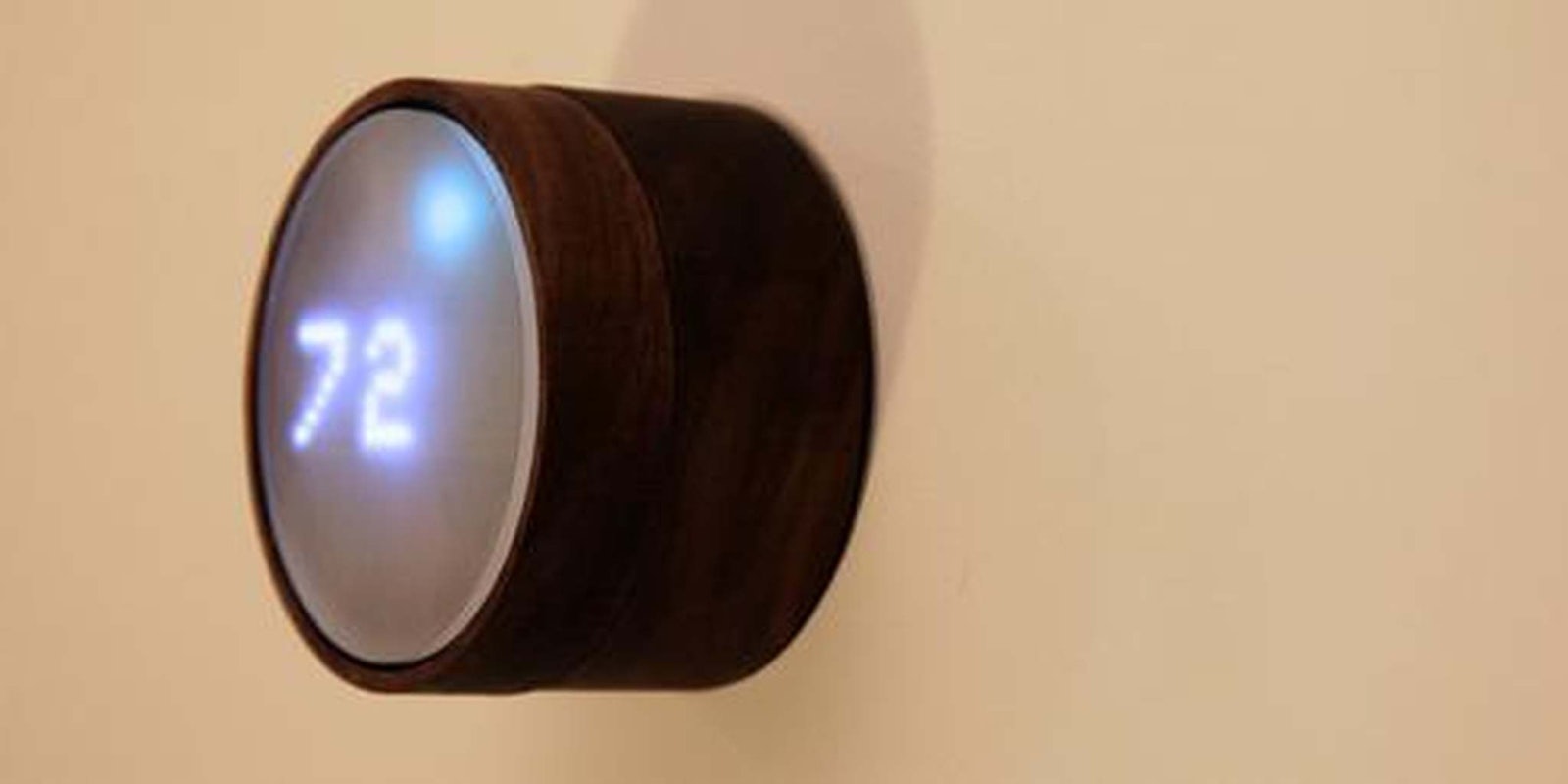This week, Google bought Nest, a startup that makes elegant, Wi-Fi enabled “smart home” appliances. Google shelled out $3.2 billion because Nest’s products are remarkable; they are designed to make your house more efficient, and they work.
But Google’s decision to acquire the company has set off some “impending tech-totalitarian society” alarm bells for people who don’t like the idea of Google having data-gathering hardware installed in their home.
Fortunately, the enterprising team at Spark.io came up with a way to have your smart thermometer and tell Google to eat it, too: they built their own open-source version of the Nest thermometer in one long, pizza-fueled day—and they published instructions on their blog.
“The message we wanted to get across is that the industry of ‘connected devices’ is wide open, and ripe for companies and entrepreneurs to enter. We wanted to prove that it’s not too difficult to build connected hardware,” Spark CEO and founder Zach Supalla tells me via email.
Of course, the team’s motivation wasn’t entirely altruistic—Spark.io sells something they call “Spark Cores,” which are teensy Wi-Fi development boards. People can use these to connect hardware to the Internet. So, naturally, the Spark.io hack for DIY smart thermostats includes prominent use of Spark Cores. But given that their purpose is to make smart home tech widely available, the profit seems deserved.
How many hackers does it take to replicate a Nest Thermostat? According to Spark.io, you need 3.5 engineers (“one went to bed early,” they explained). You also need the following: $70 worth of components, including the $39 Spark Core, LED matrices to show the temperature, a temperature and humidity sensor, and a motion detector. You also need some acrylic and wood for the enclosure, though I suppose you could experiment with materials there—Supalla said that getting high-quality wood was surprisingly difficult, so perhaps there’s room to try something else.
Once you build your hardware DIY thermostat with the above materials, you use Spark’s cloud technology to run open-source software. The team created a user interface from a Web app with a javascript knob that lets you set the temperature.
For lazy souls like me, the idea of spending hours making something you can purchase with a mouse click is impressive but decidedly unappealing, and there were way too many steps listed in the Spark.io blog to recount here now, but this is the finished project:
Not bad. I mean, not good—it looks pretty mangy, which the team admitted. But guess what? It was forged of man, not Google. And even if you don’t have the wherewithal/technical knowledge to build this exact project yourself, it serves as a reminder that the technologies we use are not mystical and your iPhone isn’t powered by magic electricity fairies.
And if you’re a privacy-mongerer who fears almighty Google having a vast amount of access to your home data but would like to live in the Jetson’s world with the rest of us… at least you know Spark.io’s looking out for you.
Screenshot via Spark.io


